Avocados: Your Ultimate Guide to Getting It Right (Beyond the Toast)
I’ve been working with food and helping people understand it for a long, long time. In all those years, I’ve never seen a food explode in popularity quite like the avocado. It feels like it went from a quirky novelty to a menu staple overnight. And honestly, it’s for good reason. They’re creamy, delicious, and just so satisfying.
In this article
But the conversation usually ends at guacamole or that famous toast. The real value of this fruit—which, fun fact, is technically a giant berry—often gets lost in the trend. Let’s be clear: its popularity is well-deserved, but the why is so much deeper than a simple ‘superfood’ label.
The magic happens when you understand what’s inside, how to pick a good one, and how it actually works for your body. This is the stuff I’ve shared with clients for years. It’s time to move from just eating them to truly getting them.
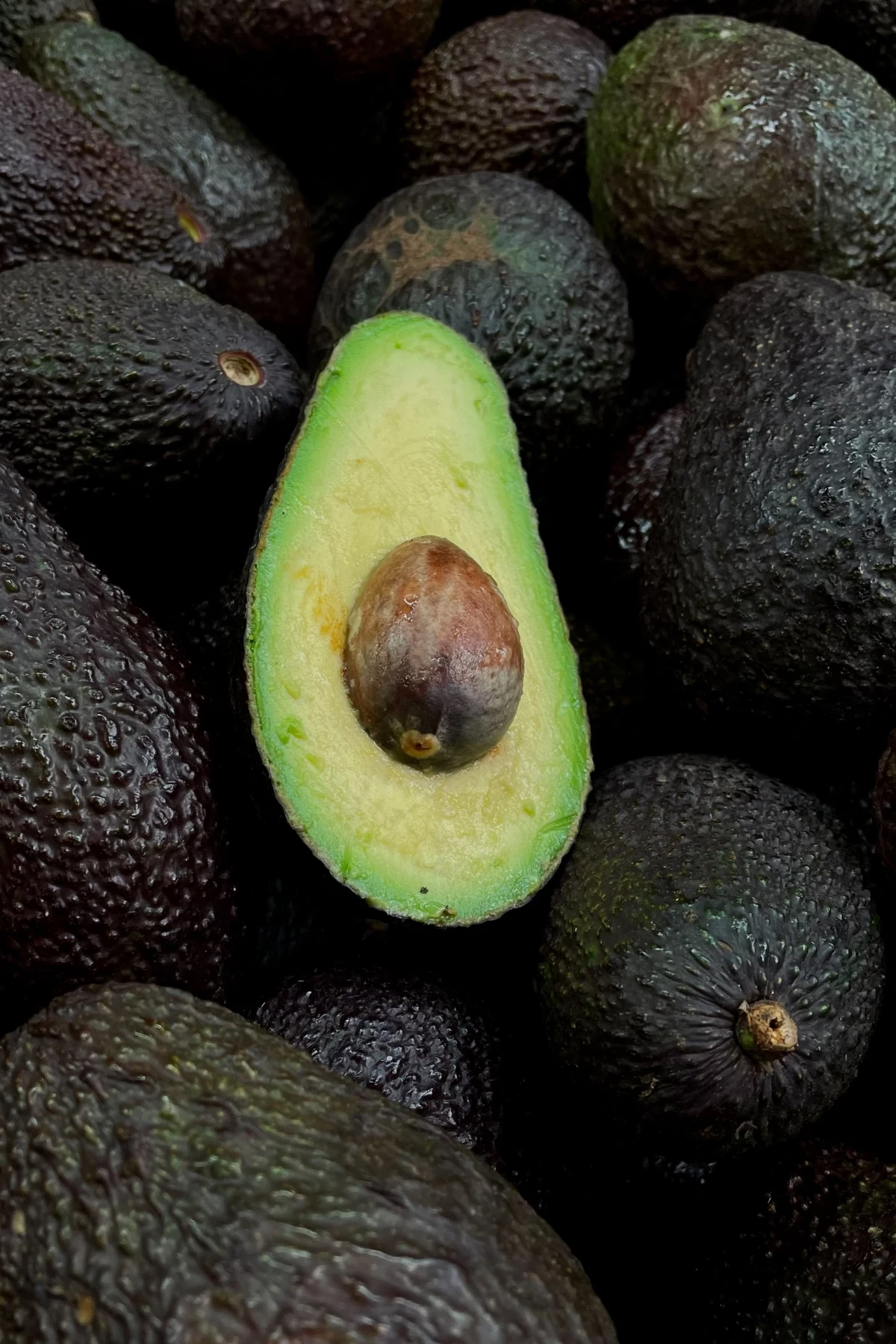
So, What’s Actually in an Avocado?
To really appreciate an avocado, you have to look at its unique makeup. It’s not like other fruits that are mostly carbs and sugar. An avocado’s profile is built on incredible fats, tons of fiber, and a whole host of vitamins and minerals. Getting this part is the first step to using it to your advantage.
The Good Fats Everyone’s Talking About
The first thing people notice is the fat content. This can make some folks nervous, especially if they’ve been taught to fear fat. But here’s the deal: the type of fat is what matters. A huge chunk of the calories in an avocado comes from monounsaturated fat, specifically oleic acid. Sound familiar? It’s the same healthy fatty acid that makes olive oil a champion in those heart-healthy Mediterranean diets.
So what does it do? This fat is a rockstar at helping manage cholesterol. It can help lower the “bad” LDL cholesterol (the kind that clogs arteries) while keeping the “good” HDL cholesterol in a healthy range. I had one client who, with his doctor’s approval, just swapped the butter on his morning toast for a quarter of an avocado. After a few months, his doctor was genuinely thrilled with the drop in his LDL numbers. It’s not a magic pill, but it’s a powerful and simple switch.
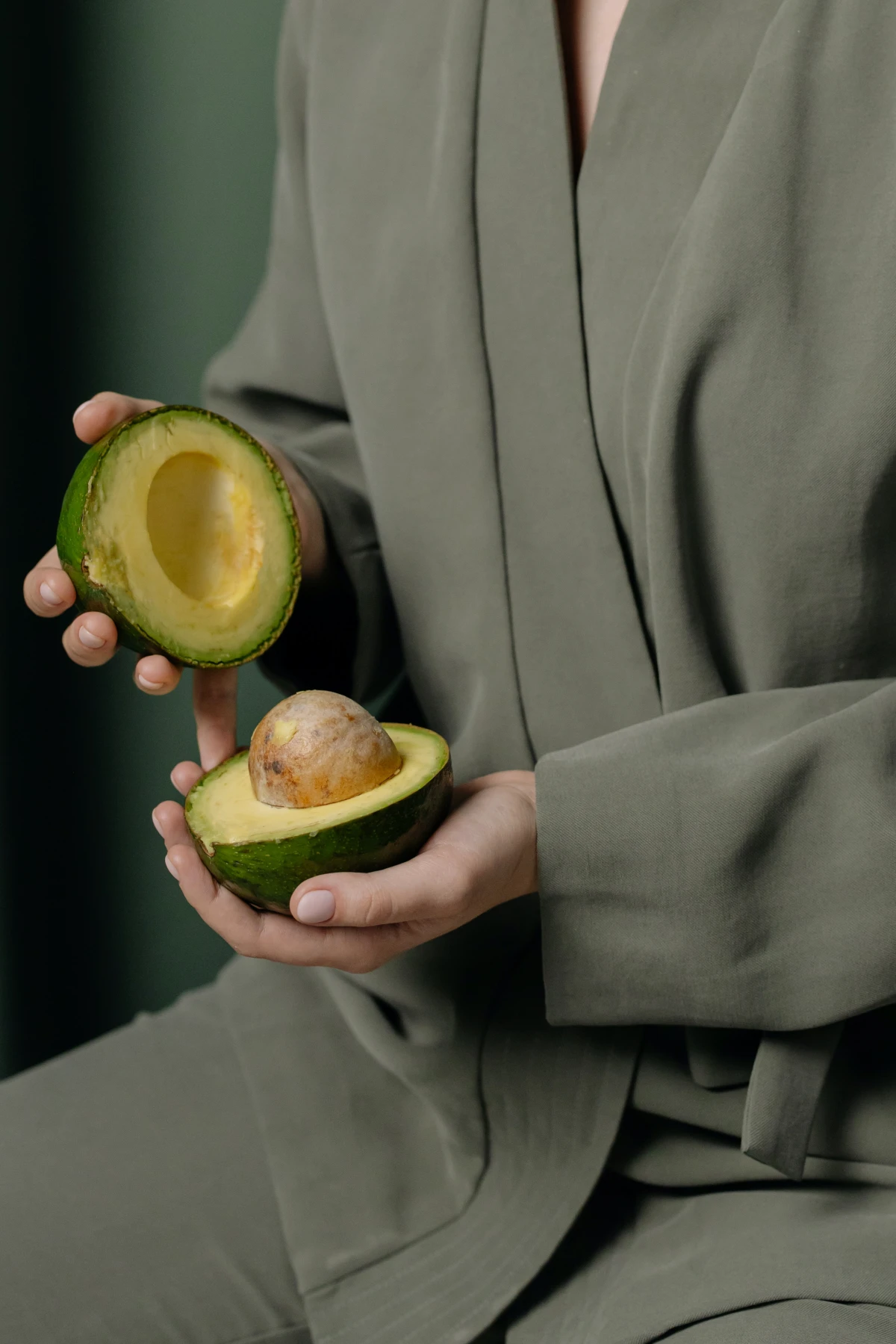
By the way, these fats also help you absorb certain vitamins—like Vitamin E from the avocado itself, but also vitamins from other foods you eat with it. That’s why adding avocado to a salad is such a smart move; it helps your body soak up more of the good stuff from the carrots and leafy greens.
The Unsung Hero: All That Fiber
Fiber is the superstar nutrient nobody talks about enough. A single medium avocado can pack around 10 to 13 grams of it, which is a huge step toward your daily goal (which is around 25g for women and 38g for men). It’s got both kinds: soluble and insoluble.
Insoluble fiber is like the “housekeeper” for your digestive system, keeping things moving along smoothly. Soluble fiber, on the other hand, dissolves into a gel-like substance in your gut. This gel slows down digestion, which is fantastic for two reasons. First, it makes you feel full longer (goodbye, mid-morning snack attack!). Second, it helps prevent blood sugar spikes, giving you nice, steady energy instead of a crash.
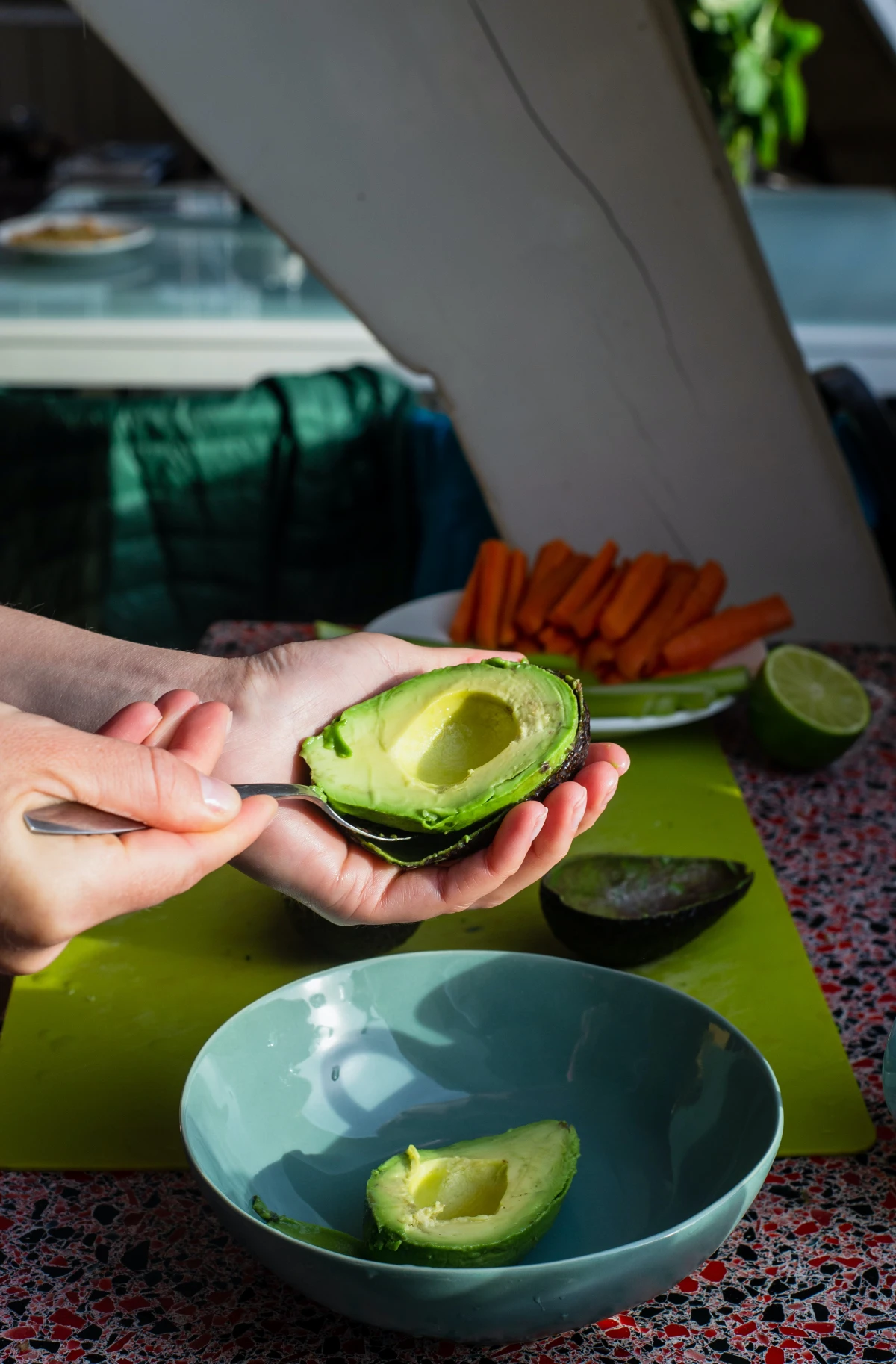
The Vitamin and Mineral Cocktail
Beyond the big two, avocados are loaded with other essentials:
- Potassium: Surprise! Avocados have more potassium per ounce than bananas. This mineral is crucial for balancing fluids and helping to manage blood pressure, especially if you have a bit too much salt in your diet.
- Vitamin K: Super important for blood clotting and bone health. Your body needs it to use calcium effectively to build strong bones.
- Folate (B9): Famous for its role in healthy pregnancies, but it’s essential for everyone. It helps with cell repair and DNA creation.
- Antioxidants (Vitamins C & E): They’re a fantastic source of Vitamin E and have a decent amount of C. These are antioxidants that act like bodyguards for your cells, protecting them from damage.
In the Kitchen: How to Actually Handle an Avocado
Knowing the benefits is one thing, but dealing with a rock-hard or, even worse, a brown mushy avocado is another. I’ve seen so much avocado-related frustration! A few simple pro-level tricks can save you a lot of grief and money.
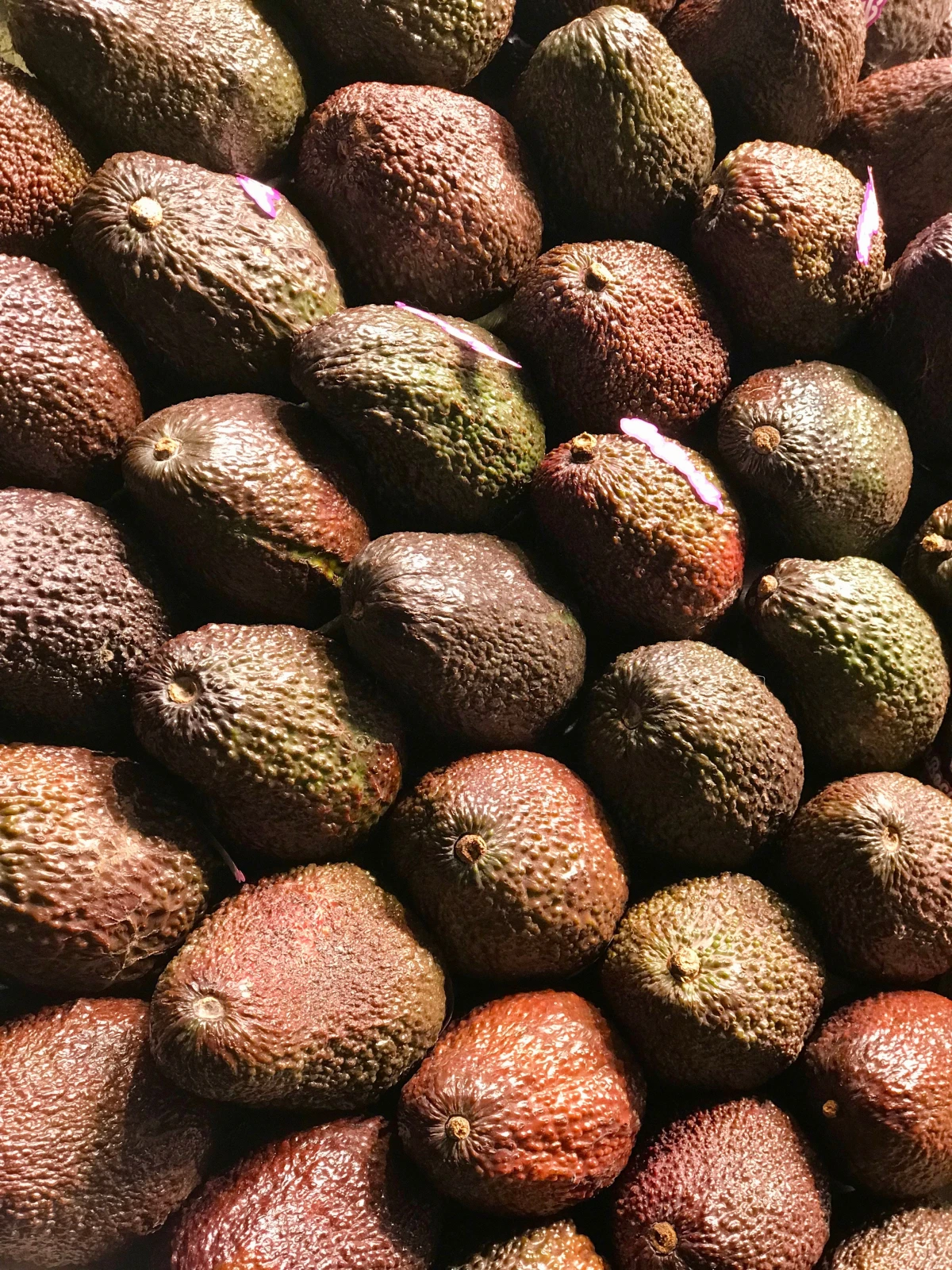
Picking the Perfect One
The common, bumpy-skinned avocado you see everywhere is the one that turns from green to a purplish-black as it ripens. But color isn’t the whole story. The real test is the feel. Cradle it in your palm (don’t poke with your fingertips—that causes bruises!) and give it a gentle squeeze. It should yield slightly, like a ripe peach, but not feel soft or have mushy spots. Expect to pay anywhere from $1 to $3 per avocado, depending on the season and where you’re shopping.
If you’re buying for later in the week, grab the firm, bright green ones. They’ll feel hard, like an apple, and you can ripen them at home.
Quick tip: Try flicking off the little stem cap. If it pops off easily and it’s green underneath, you’ve likely got a winner. If it’s brown, the avocado is probably overripe inside. If it won’t budge, it needs more time.
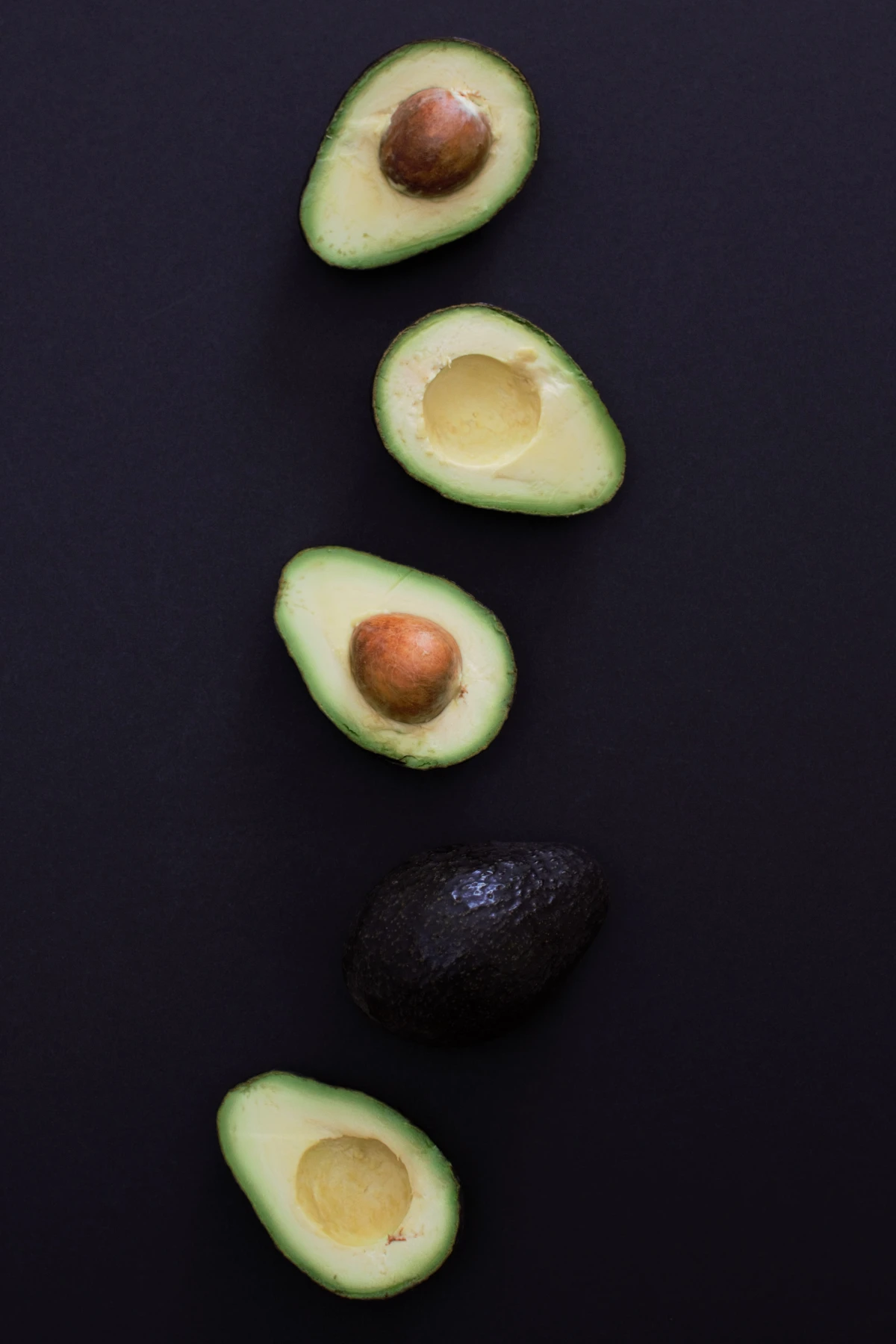
Uh-Oh, My Avocado is… (A Troubleshooting Guide)
Sometimes things go wrong. Here’s what to do:
- It’s Stringy Inside: This usually happens with avocados from younger trees or when they’re picked too early. While a little unappealing, it’s generally safe to eat. Your best bet is to blend it into a smoothie or a creamy dressing where the texture won’t be noticeable.
- They All Ripened at Once! The classic problem. Don’t panic! Mash the flesh of the perfectly ripe avocados, mix with a little lime or lemon juice, and freeze it. An ice cube tray is perfect for this. Pop out a cube or two for instant guacamole, smoothie creaminess, or a sandwich spread whenever you need it.
The Safest Way to Cut and Pit (No ‘Avocado Hand’!)
Heads up! Emergency rooms have a name for an injury that comes from stabbing at an avocado pit while holding it in your palm. Please don’t do that.
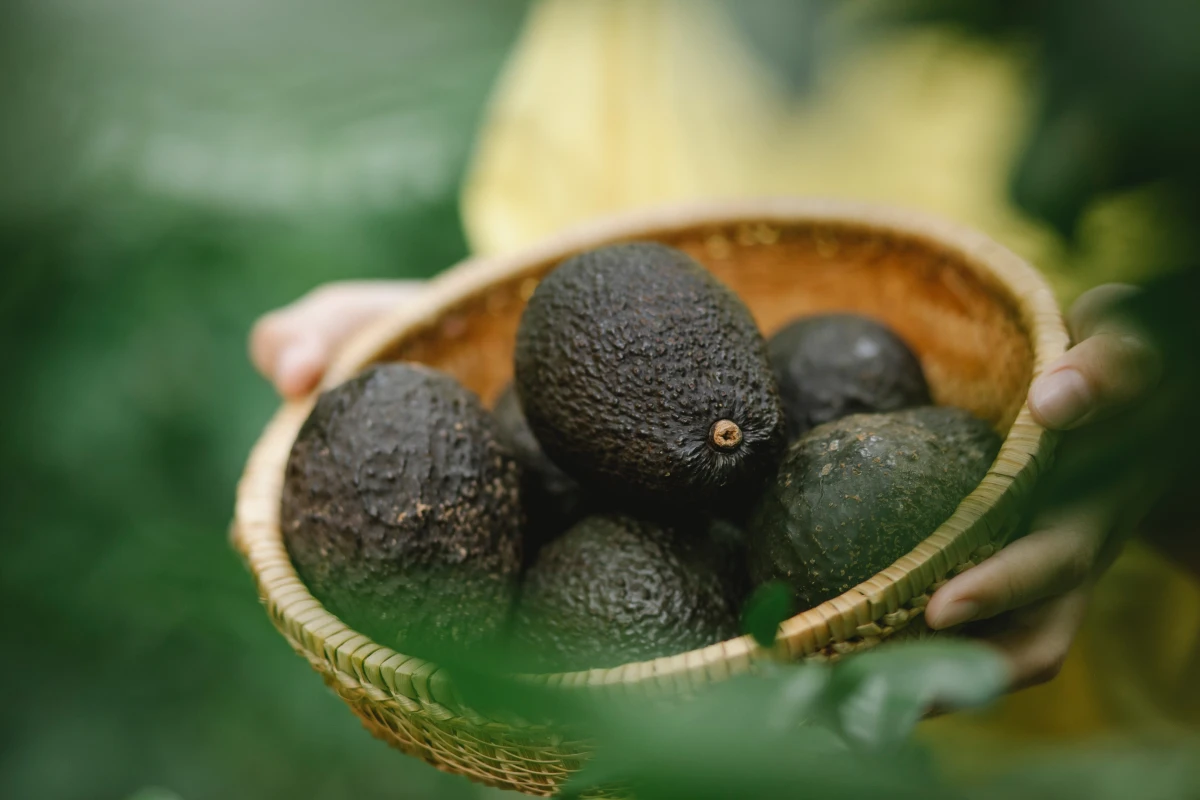
Here’s the safe way:
- Place the avocado on a cutting board. Always.
- Slice it lengthwise around the big seed in the middle.
- Twist the two halves to separate them.
- For the half with the pit, lay it flat on the board. Gently but firmly tap the base of your knife blade into the pit so it gets stuck. Then just twist the knife, and the pit pops right out. To get it off your knife, just tap the side of the blade on the edge of your compost bin. Easy and safe.
Putting It to Use: Practical Swaps and Recipes
This is where the fun starts. A realistic serving is about one-third to one-half of a medium avocado (around 50-75 grams of flesh). It’s not about just adding it on top of what you already eat; it’s about smart swaps.
Easy Health Swaps
Think about what avocado can replace. It’s a great way to cut down on less-healthy fats and add fiber.
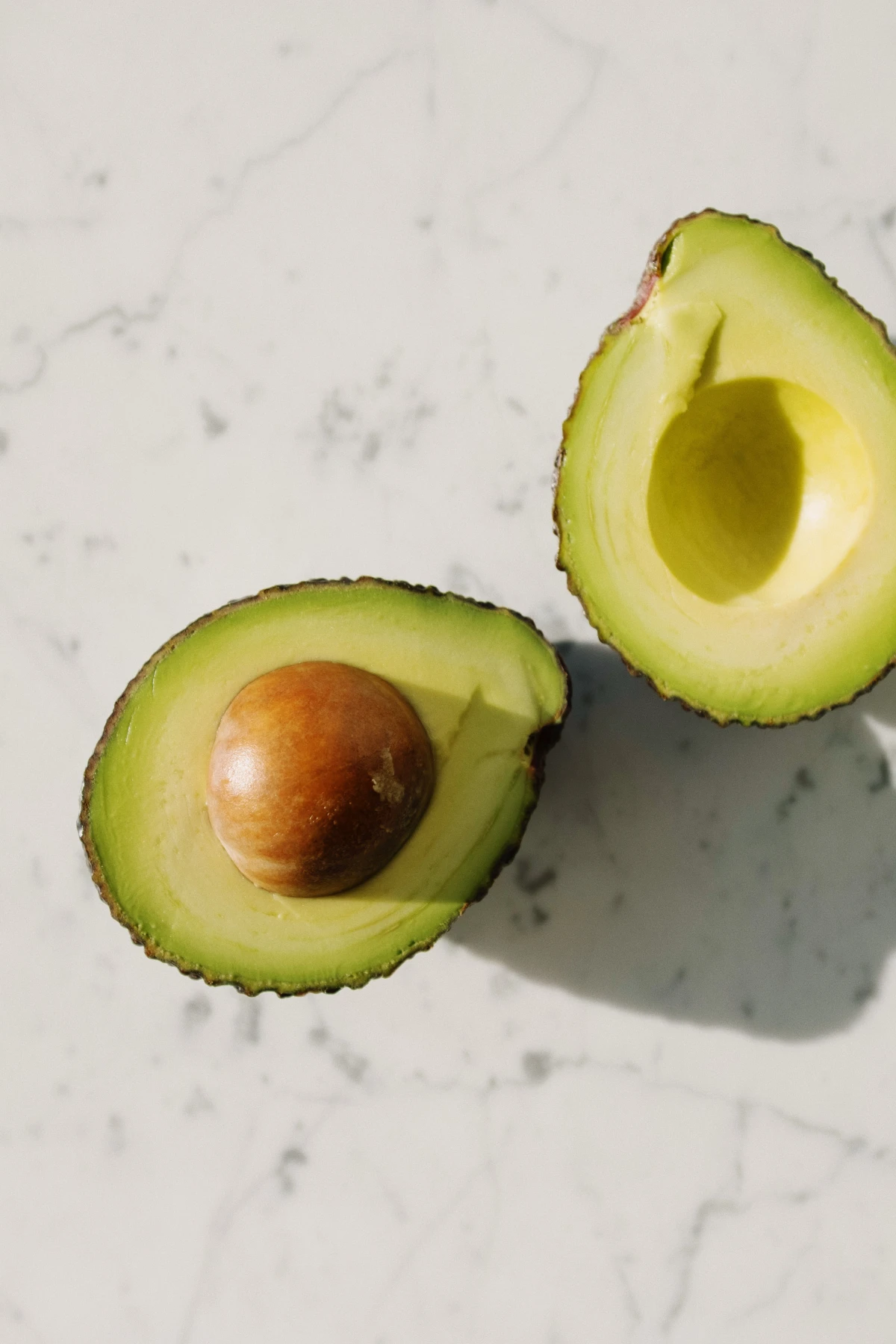
- Instead of: 2 tbsp of mayo on a sandwich (around 180 calories, mostly refined oil).
Try: 1/4 mashed avocado (about 60 calories, full of good fats and fiber). - Instead of: Sour cream-based creamy dressing.
Try: Blending avocado with lemon juice, herbs, and a splash of water.
My Go-To 2-Minute Dressing
Seriously, this is a lifesaver. Just toss these into a blender:
- Half a ripe avocado
- The juice of one whole lemon
- A small splash of water to get it to the right consistency
- A pinch of salt and pepper
Blend until smooth. Done. It’s an amazing, creamy dressing for any salad.
Baking with Avocado: The Good, the Bad, and the Greenish
Yes, you can bake with it! You can substitute mashed avocado for butter or oil in a 1:1 ratio. It works best in recipes that are already dense and have strong flavors.
It’s amazing for fudgy brownies or chocolate muffins, where the cocoa masks any color and the density is a plus. It’s… not so great for a light yellow cake or delicate sugar cookies. You’ll likely end up with a slightly greenish, dense result that just isn’t quite right. So stick to the rich, dark stuff!
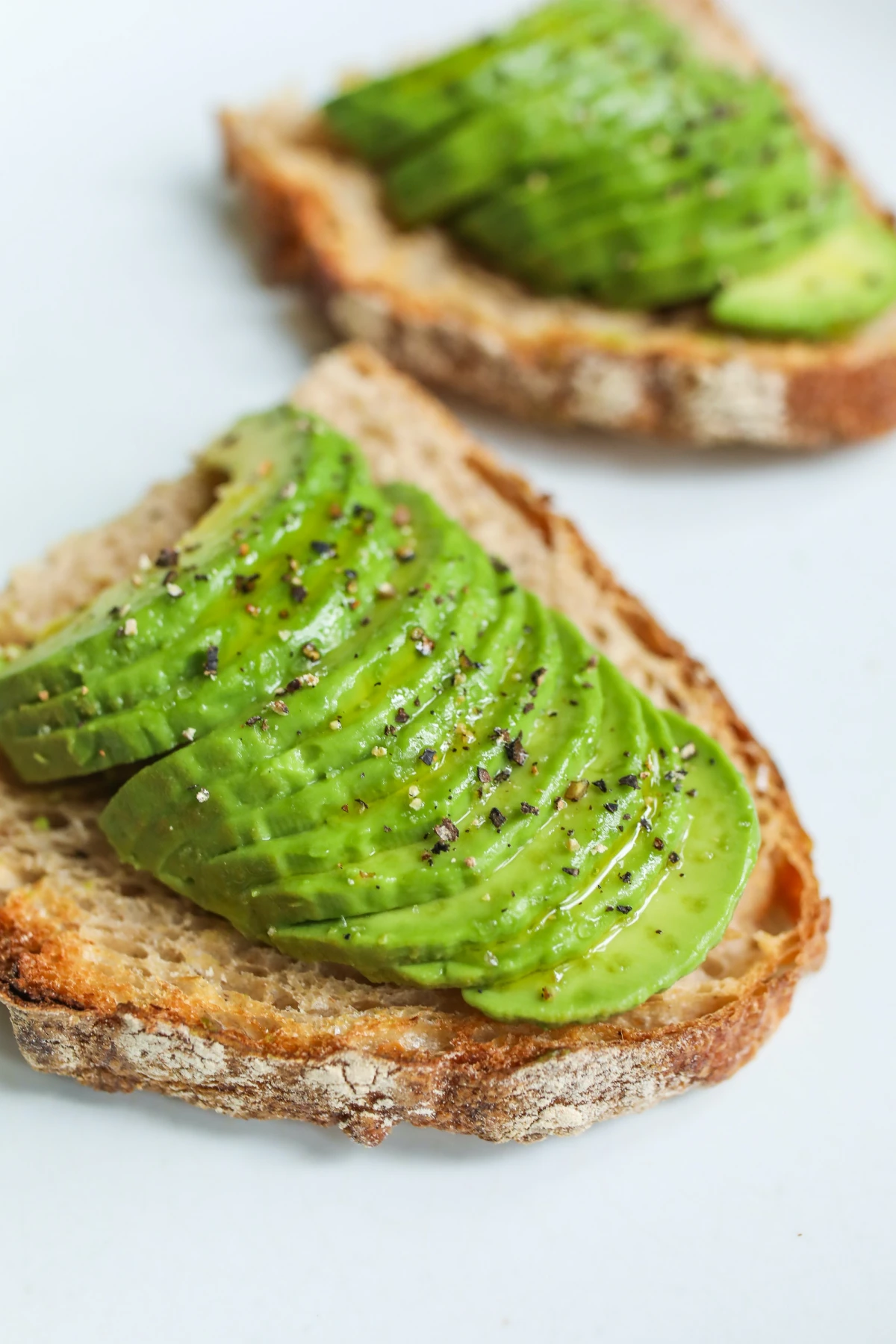
Important Stuff to Know
A Quick Word on Varieties
You might sometimes see those giant, smooth-skinned green avocados, often from Florida. They’re different! They have a higher water content and less fat, making them less creamy and more firm. They’re fantastic for slicing into salads or bowls but don’t work nearly as well for a rich, creamy guacamole. The smaller, pebbly-skinned ones are your go-to for mashing.
Do I Need to Buy Organic?
People ask me this all the time. Honestly, if you’re on a budget, conventional avocados are a great choice. Thanks to that thick, protective skin, the flesh is well-protected from pesticides. In fact, avocados consistently appear on lists of produce that are safest to buy non-organic. Save your organic budget for things with thin skins, like berries or leafy greens.
Critical Warning for Pet Owners
This is SO important. Avocados contain a toxin called persin, which is mostly in the pit, skin, and leaves. While it’s generally fine for us, it can be very dangerous for many animals, especially birds, rabbits, and horses. It can also cause issues for dogs and cats. To be safe, keep all parts of the avocado far away from your pets.
So there you have it. The avocado is an incredible food, but its real power comes from understanding it. Now you can pick it, prep it, and use it in ways that go far beyond the trends.
Your challenge for this week: Try the avocado-for-butter swap in a batch of brownies and let me know how it goes! You might be surprised.
Inspirational Gallery
Hass Avocado: The familiar superstar with a pebbly, thick skin that darkens from green to purplish-black as it ripens. Its flavor is rich and nutty, with an exceptionally creamy texture perfect for almost any use.
Fuerte Avocado: Often larger and pear-shaped, its skin is smooth, thin, and stays green even when ripe. The flavor is milder and more delicate, making it excellent for slicing into salads or sandwiches where you want a less overpowering taste.
Ever cut open an avocado to find strange, stringy brown lines inside?
Don’t worry, it’s usually perfectly safe to eat. This is called vascular browning and often occurs in fruit from very young trees or those stored in slightly-too-cold temperatures. While it might look a bit unappealing, the taste and nutrition of the creamy flesh are typically unaffected. Simply scoop around the strings if you mind the texture.
It can take as much as 70 gallons of water to produce a single pound of avocados, a figure highlighted in studies from the University of California system.
This reality adds a layer of mindfulness to our consumption. This high water footprint means that making the most of every avocado—by storing it correctly to prevent waste and using every last bit—is a small but meaningful way to honor the significant resources required for its journey to your kitchen.
To keep that other half fresh and green, the goal is to prevent air from touching the flesh. Here are the best ways:
- Brush the exposed green surface with lemon or lime juice to slow down the oxidation process.
- Press a piece of plastic wrap directly onto the flesh, ensuring there are no air bubbles.
- For a reusable option, silicone covers like Avocado Huggers create a tight seal specifically for this purpose.
The #1 mistake when checking for ripeness: Squeezing the body of the avocado. This pressure bruises the delicate flesh underneath, leading to the disappointing brown spots you find later. Instead, gently apply pressure with your thumb to the small area at the very top, where the stem was. If it gives slightly, it’s ready to eat.
- A smoke point as high as 520°F (271°C), making it ideal for high-heat searing and frying.
- A clean, neutral flavor that won’t interfere with the taste of your ingredients.
- A fantastic source of the same heart-healthy monounsaturated fats found in the fruit itself.
The secret? Refined avocado oil. Brands like Chosen Foods and La Tourangelle offer high-quality versions that are incredibly versatile for all types of cooking.
Nearly one-third of all avocados consumed globally originate from a single country: Mexico.
Look beyond Mexico and California for your avocado inspiration. In Brazil,
Don’t throw away that slightly-too-soft, overripe avocado! While it may not be pretty enough for slices, its intense creaminess is a hidden asset. Blend the flesh with unsweetened cocoa powder, a liquid sweetener like maple syrup, a pinch of salt, and a splash of milk until silky smooth. You’ll have a rich, decadent chocolate mousse, and no one will ever guess the healthy secret ingredient.
If you’re tired of waiting for avocados to ripen on the counter, use the classic fruit-bowl trick. Place your hard avocado in a paper bag with a banana or an apple. These fruits release ethylene gas, a natural plant hormone that significantly speeds up the ripening process. Check it daily, as it can go from rock-hard to perfectly ripe in just a day or two.










